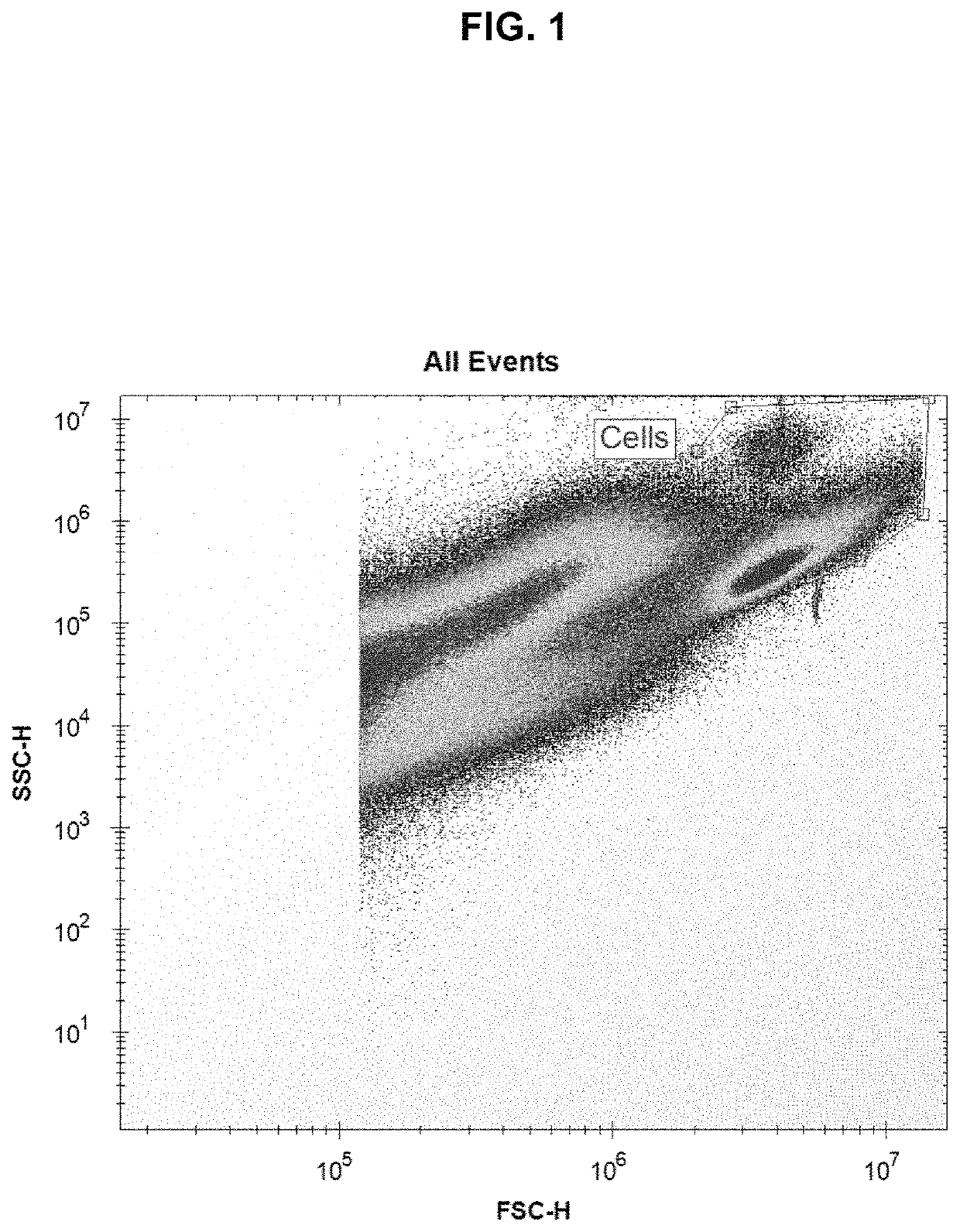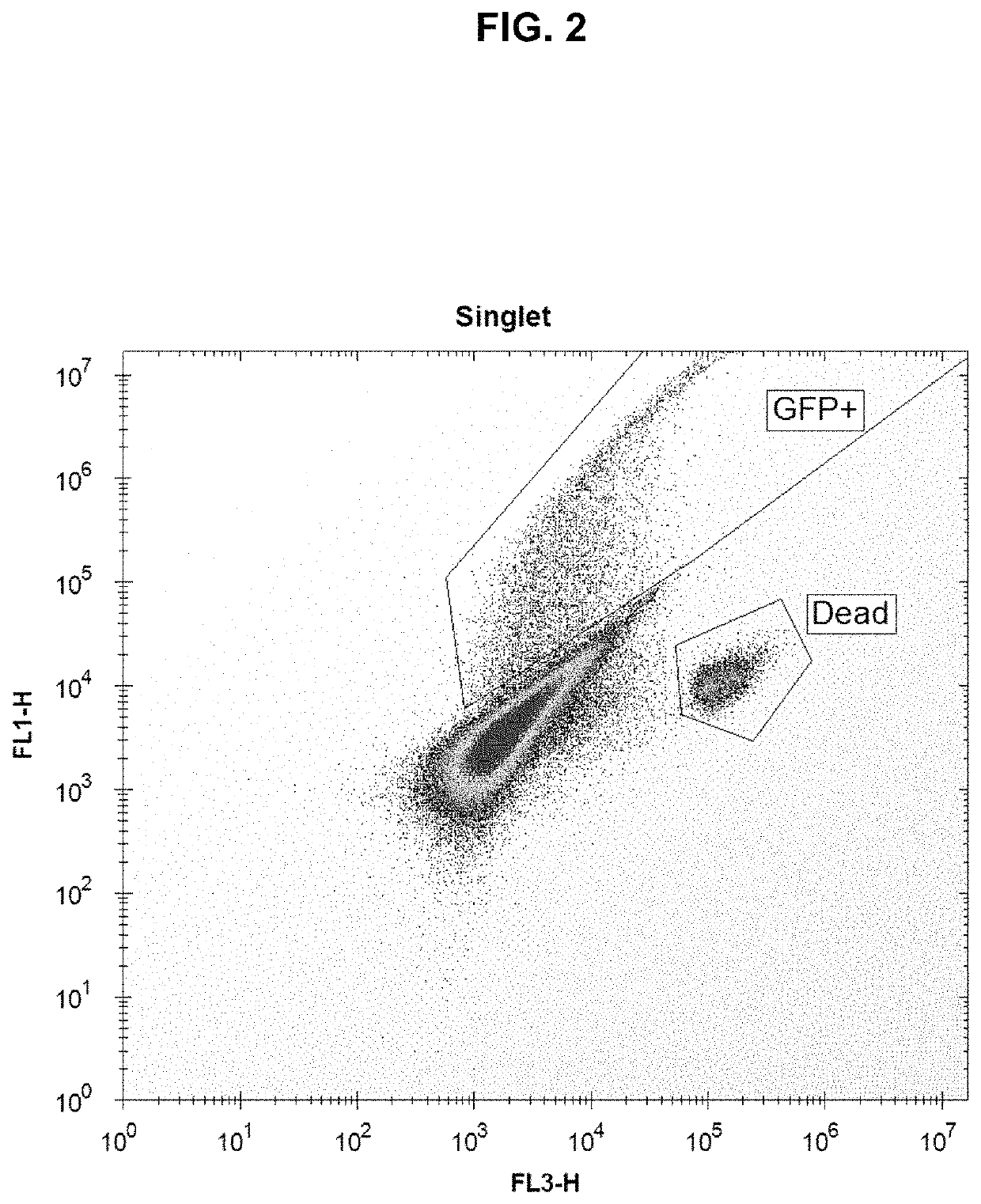High-efficiency transfection of biological cells using sonoporation
a biological cell and high-efficiency technology, applied in the field of biotechnology, can solve the problems of difficult and time-consuming production of viral vectors, complex development of stable cell lines, time-consuming and labor-intensive,
- Summary
- Abstract
- Description
- Claims
- Application Information
AI Technical Summary
Benefits of technology
Problems solved by technology
Method used
Image
Examples
example 1
[0139]Using the above protocol, four plates of HEK-293 cells were tested. All four plates were set up identically, including DPBS-only control wells. The control plate was not sonicated. 384-well plates were used, with 25,000 HEK-293 cells per well. Each plate was pulsed with a single voltage, either 0 V (control plate), 0.5 V (low power), 1.0 V (medium power), or 1.5 V (high power), where 1.0 V resulted in an acoustic pressure at the focal spot of about 1.5 MPa. 24 hours post-sonoporation, the cells were examined for GFP fluorescence. It was found that sonoporation was successful in enabling the HEK-293 cells to take up and express the GFP plasmid, and that the percent uptake increased with voltage and the concentration of plasmid-loaded microbubbles. The highest degree of fluorescence was found with the highest concentration of plasmid-loaded microbubbles and at the highest voltage. Green (fluorescent) cells were concentrated around the perimeter of the wells due to the distributi...
example 2
[0140]The procedures of the General Protocol and Example 1 were follows, except that a “plasmid only” control was substituted for the 1:200 dilution, i.e., plasmid was added at the same concentration found in the 1:4 wells. The results obtained confirmed that high media concentrations of plasmid alone were not sufficient to transform cells.
example 3
[0141]The procedures of the General Protocol Example 1 were repeated, but rather than single pulses applied to the center of each well, each well was pulsed several times at different locations. This was found to eliminate the concentration of transfected cells around the perimeter of the well, providing for a more even distribution, as could be inferred from the presence of GFP-fluorescence throughout each well.
PUM
| Property | Measurement | Unit |
|---|---|---|
| reservoir-to- | aaaaa | aaaaa |
| transition time | aaaaa | aaaaa |
| transition time | aaaaa | aaaaa |
Abstract
Description
Claims
Application Information
 Login to View More
Login to View More - R&D
- Intellectual Property
- Life Sciences
- Materials
- Tech Scout
- Unparalleled Data Quality
- Higher Quality Content
- 60% Fewer Hallucinations
Browse by: Latest US Patents, China's latest patents, Technical Efficacy Thesaurus, Application Domain, Technology Topic, Popular Technical Reports.
© 2025 PatSnap. All rights reserved.Legal|Privacy policy|Modern Slavery Act Transparency Statement|Sitemap|About US| Contact US: help@patsnap.com



